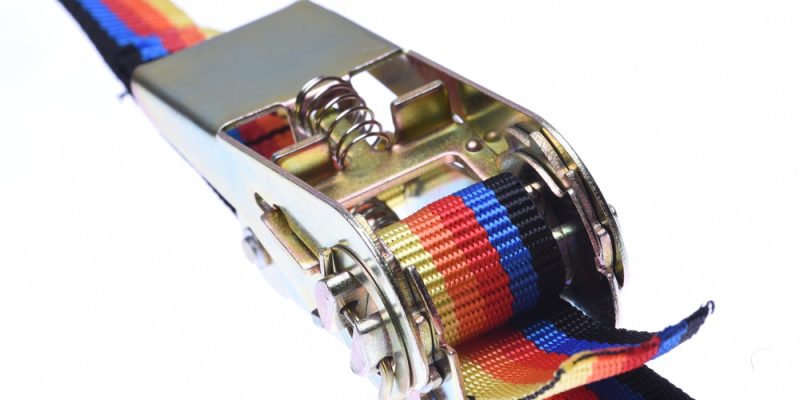I admit to sometimes questioning the wisdom of drivers who do not make the effort to properly secure cargo before hitting the road. There are other times when I tip my proverbial hat to a driver who’s done an exceptional job with cargo securement. I am especially impressed when a driver uses a webbing tie-down strap.
What is a webbing tie-down strap? It is a strap made with nylon webbing material. It could be a Rollercam brand cam strap or an industrial grade ratchet strap meant for commercial trucking. The point is that webbing material is ideal for tie-down straps. A simple webbing strap can do a lot of work in terms of securing cargo.
A Woven Material
Webbing material is a woven material. That is where its strength comes from. Nylon fibers are spun into threads and then woven to create straps. Weaving distributes the load more evenly across a material’s entire surface. Therefore, the denser the weave, the stronger the material. This is where webbing tie-down straps excel.
Webbing material is tightly woven for maximum tensile strength. That means a tie-down strap can handle a significantly heavy load before failing. Its tensile strength certainly is not as high as steel chain, but webbing materials are stronger than rubber bungee cords and most types of rope.
More Surface Area for Contact
Another thing I like about webbing tie-down straps is their width compared to bungee cords and ropes. Because they are wider, they offer more surface area for contact between strap and cargo. That matters when you understand the physics of how tie-down straps keep things secure.
A tie-down strap’s capabilities are realized in two ways: downward force and friction. In terms of downward force, tightening a strap over the top of a load puts pressure on the cargo. The greater the pressure, the less likely the load is to move. That’s how downward force works.
It turns out that downward force alone is not enough to do the trick. You need something else: friction. Friction is the energy generated by two surfaces that come in contact. The greater the energy, the less likely it is that either surface will slip.
Wider tie-down straps create more friction than narrower bungee cords and ropes. When you choose webbing straps, you need fewer tie-downs as compared to the other options.
They Wear Extremely Well
Rope is pretty good in terms of how well it wears. Rubber is okay, too. But for my money, neither material wears as well as nylon webbing material. I have never had a bungee cord last as long as a webbing tie-down strap. Rope can last as long, but it is not likely to.
Nylon webbing material lasts so long because it’s resistant to so many things. Heat doesn’t bother it. Neither does cold. The material is resistant to direct sunlight and isn’t terribly bothered by UV rays. It is even water resistant.
About the only thing you need to be concerned about is chemical damage. Tie-down straps do not play well with acids, petroleum products, and other types of chemicals.
Choosing the Right Buckle
I guess the last bit of advice for anyone interested in buying webbing tie-down straps is to carefully consider buckle choices. Cam buckles are adequate for most routine jobs around the house. But if you are hauling extremely heavy loads, you’re better off choosing ratchets.
A simple webbing tie-down strap can do a lot of work in terms of holding cargo secure. After using them just once, I never went back to bungee cords or ropes. For me, webbing tie-down straps are the real deal.








Comments